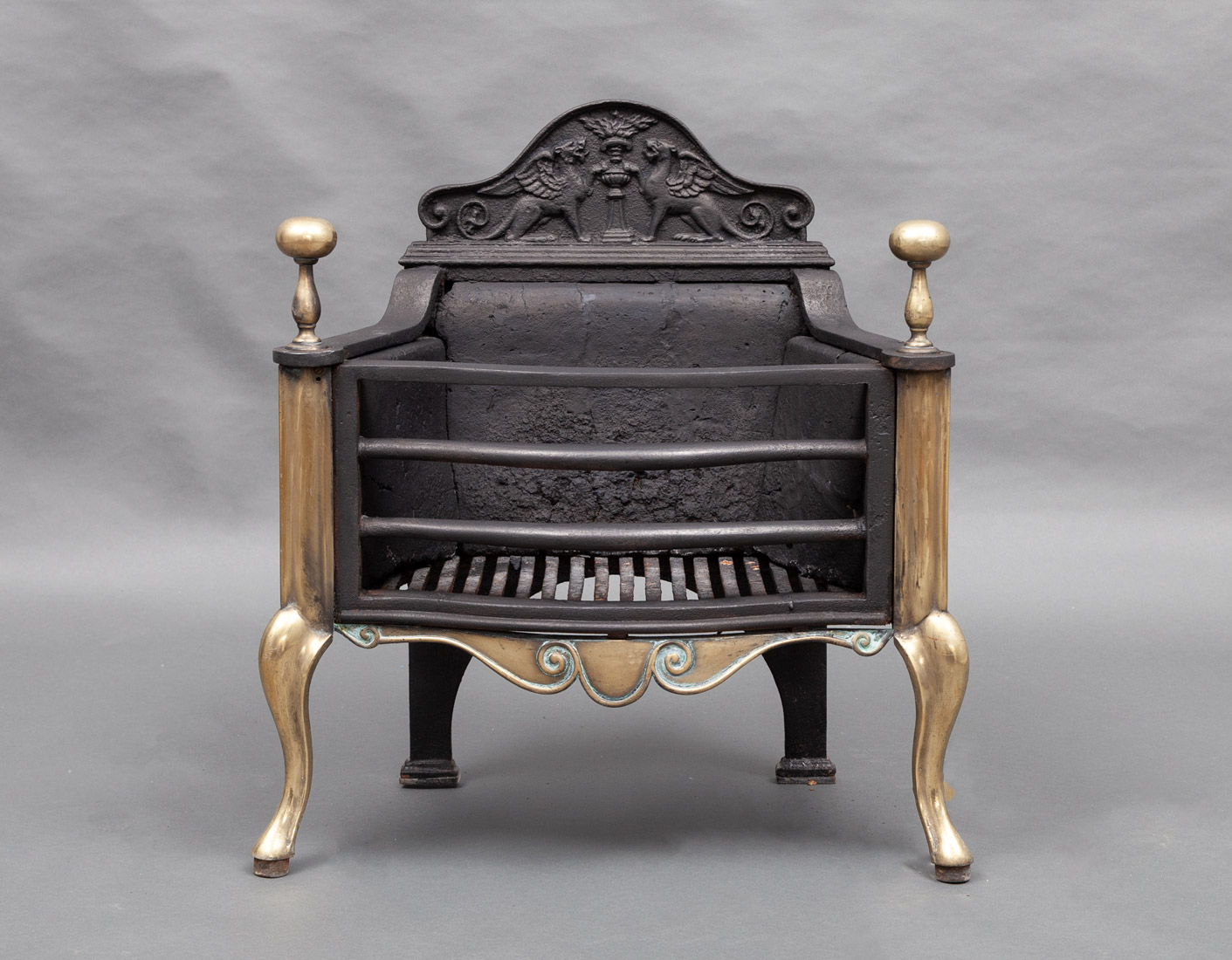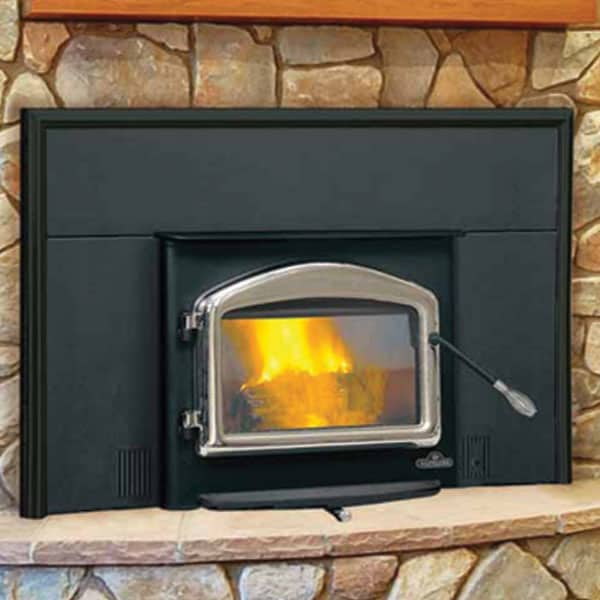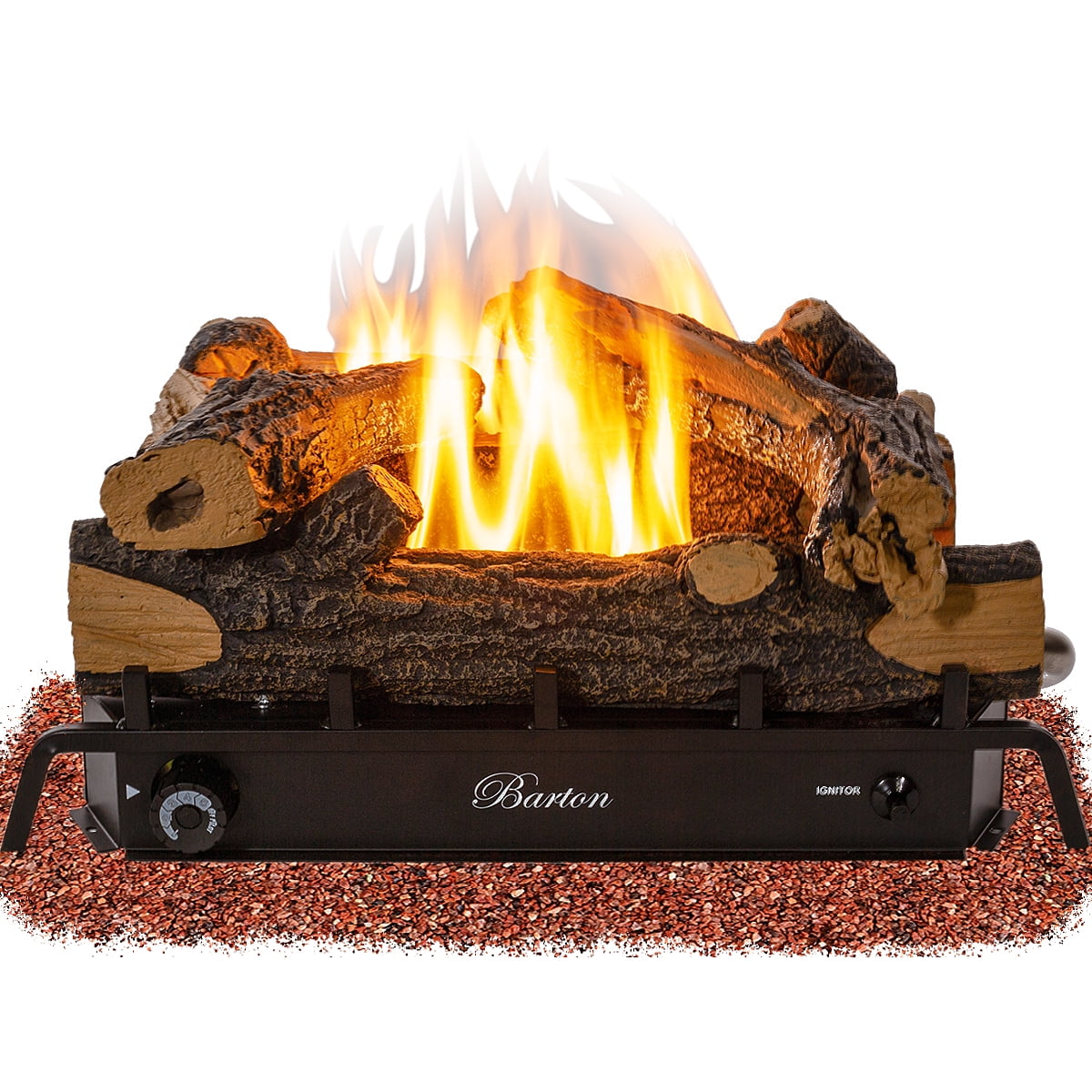Wood Fireplace Insert Grates
Wood fireplace insert grates are essential accessories designed to elevate the efficiency and aesthetics of a traditional wood-burning fireplace. These grates serve several functions, from improving airflow to enhancing the heat output of a fireplace, making them invaluable for anyone looking to optimize their home heating experience. Selecting the right grate is key to ensuring a safe and enjoyable fire, and understanding the various types, materials, and features available can help homeowners make informed decisions. Let’s discuss the importance of wood fireplace insert grates, the materials they’re made from, their design options, proper sizing considerations, maintenance tips, and common mistakes to avoid. Let’s explore these aspects in depth to help you choose the ideal fireplace insert grate for your home.

The Purpose of Wood Fireplace Insert Grates
Wood fireplace insert grates are designed to hold logs in place while elevating them off the floor of the fireplace. This elevation is crucial because it promotes better airflow underneath the logs, allowing oxygen to reach the fire from multiple angles. When the fire receives adequate oxygen, it burns hotter and more efficiently, producing less smoke and creosote buildup. By keeping the logs elevated, grates also prevent the wood from sitting directly on the hearth, which reduces wear and tear on the fireplace floor and extends its lifespan.
Additionally, grates help keep the firewood organized, ensuring that logs do not roll around dangerously. This containment makes it easier to maintain a clean and controlled burn. For households that frequently use their fireplace during the colder months, a well-constructed grate can make fire maintenance less tedious. As a result, homeowners can enjoy a consistent and longer-lasting fire without constantly adjusting the logs.
Beyond functionality, the right grate can also add a touch of visual appeal. Many grates are crafted with intricate designs that complement the aesthetics of a fireplace. From minimalist styles to more ornate patterns, fireplace grates come in various shapes and sizes, making it possible to find one that enhances both the performance and look of your fireplace insert.

Types of Materials Used in Fireplace Insert Grates
The material used to construct a fireplace grate plays a significant role in its durability and heat-handling capabilities. The most common materials for wood-burning grates are cast iron and steel. Cast iron grates are highly durable and capable of withstanding intense heat over extended periods. They are typically heavier than steel grates and are ideal for fireplaces that are used frequently. Cast iron grates often come in solid designs, making them less prone to warping and capable of holding up even under large, heavy logs.
Steel grates, on the other hand, are lighter and often feature a more open design, allowing for better airflow. While they may not be as long-lasting as cast iron, steel grates are still robust and effective, especially when made from thick, high-quality materials. One of the advantages of steel grates is that they can be designed with finer details and more contemporary aesthetics. This flexibility in design makes them popular among homeowners looking for a balance between function and style.
In addition to these primary materials, some grates may also include coatings or finishes to enhance their resistance to heat and corrosion. For example, grates with a powder-coated finish can resist rusting and chipping, making them suitable for both indoor and outdoor fireplace applications. When choosing a grate, understanding the properties of each material is key to selecting one that aligns with your usage needs and maintenance preferences.

Different Design Options for Fireplace Insert Grates
Fireplace grates come in various designs, each serving different functional and aesthetic purposes. The most basic design is the flat grate, which simply raises the logs off the ground without any additional features. This type is ideal for small, traditional fireplaces or inserts where space is limited. Flat grates are typically used in older homes with narrower fireplace openings, making them a great option for maintaining a classic look.
Another popular design is the basket or cradle-style grate. These grates have elevated sides, creating a cradle effect that keeps logs securely in place. The basket design not only holds logs better but also ensures more consistent burning by directing the firewood toward the center. This design is particularly useful for large fireplaces where the goal is to achieve an intense, long-lasting fire.
Last, there are fireplace grates with ember retainer designs, which are equipped with a mesh-like base that catches and holds embers. This feature is particularly beneficial for those who want to maximize the heat output of their fireplace, as embers retain heat longer and help maintain a steady fire. The ember-retaining grate is an excellent choice for homeowners looking for high-efficiency heating options in their wood-burning fireplace insert.

Proper Sizing Considerations for Fireplace Insert Grates
Choosing the right size grate for your wood-burning insert is crucial to ensuring safe and efficient operation. An improperly sized grate can lead to airflow issues, excessive wear, and even potential safety hazards. To determine the appropriate size, start by measuring the width and depth of your fireplace insert. The general rule is to select a grate that is at least six inches smaller in width than your fireplace opening to allow for adequate airflow around the logs.
In addition to width, the depth of the grate is equally important. It should fit comfortably within the firebox without extending too far forward or backward. If the grate is too deep, it may restrict the space available for adding or maneuvering logs, leading to difficulties in maintaining the fire. On the other hand, a grate that is too shallow might not provide sufficient support for larger logs, resulting in instability.
Another consideration is the height of the grate. Some grates are designed with higher legs, which elevate the logs further off the ground and increase the airflow underneath. This feature is particularly useful in older fireplaces that may not have optimal draft conditions. By choosing a grate with the right height, width, and depth, you can ensure a safer and more enjoyable fireplace experience.

Maintenance Tips for Wood Fireplace Insert Grates
Proper maintenance of your fireplace grate is essential to extend its lifespan and maintain safe operation. One of the most important maintenance steps is to regularly remove ash and debris buildup from around the grate. Excessive ash can block airflow, reducing the efficiency of the fire and causing premature wear on the grate. It’s best to clean out the fireplace after every few uses to prevent these issues and keep the grate in optimal condition.
Another key maintenance tip is to inspect the grate for signs of warping, cracks, or damage. Grates are exposed to high heat, and over time, even the most durable materials can show signs of wear. If you notice any structural issues, such as bent bars or cracked legs, it’s best to replace the grate immediately to prevent accidents or fire hazards. Regular inspection is especially crucial for cast iron grates, as they are prone to cracking under extreme conditions.
Last, consider applying a heat-resistant coating or rust-preventative treatment to extend the lifespan of your grate. This is particularly important for steel grates, which can be more susceptible to rust and corrosion. A simple application of stove polish or heat-resistant paint can protect the grate from moisture and ensure it remains in good condition, even with frequent use. With proper care, your fireplace grate can provide many years of reliable service.

Common Mistakes to Avoid When Choosing Fireplace Insert Grates
One common mistake homeowners make when selecting a wood fireplace grate is choosing the wrong size. As previously mentioned, a grate that is too large or too small can disrupt airflow and create potential safety hazards. Always measure your fireplace insert carefully and select a grate that fits within those dimensions while allowing for proper airflow. Another mistake is neglecting to consider the type of wood you’ll be burning. Hardwoods like oak and maple require a sturdy grate that can handle heavier logs, while softer woods might do well with a lighter grate.
Another pitfall is overlooking the importance of material. Homeowners may be tempted to choose a cheaper steel grate without considering the long-term benefits of a more durable cast iron model. While steel grates are often less expensive, they may not last as long under high heat conditions, leading to frequent replacements. Assessing your usage needs and opting for the right material from the start can save both time and money in the long run.
Lastly, failing to consider the design and functionality of the grate can impact your fireplace experience. Choosing a basic flat grate when a cradle-style or ember-retaining grate would better suit your needs can lead to inefficient burns and less heat output. By taking the time to research different styles and their benefits, you can select a grate that enhances both the performance and appearance of your wood-burning fireplace insert.

EPI-1101M Napoleon Small Wood Burning Fireplace Insert, Metallic Black – Fireplacess.com

Cast iron Fireplace Grates at Lowes.com

18-in 30,000 BTU Fireplace Log Adjustable Flame Grate Split Oak Vent Free Natural Gas ANSI

Wood Grate for Fire Pits – Firebuggz – Firebuggz

More heat from the fireplace. I really like this idea. Fireplace grate, Wood burning stove

Related Posts:
- Fireplace Insert Trim Ideas
- Fireplace Insert Ratings
- Gas Fireplace Inserts Reviews Consumer Reports
- See Through Fireplace Inserts Wood Burning
- Wood Fireplace Insert Blower Motor
- Decorative Fireplace Inserts
- Gas Fireplace Insert Problems
- Dual Fuel Fireplace Insert
- Vent Free Gas Fireplace Insert with Logs
- Linear Fireplace Insert
Wood fireplace insert grates are a popular choice for homeowners looking to increase the efficiency and functionality of their existing fireplace. These grates are designed to improve the burning of wood in a fireplace by lifting the fire off the floor of the hearth, allowing for better airflow and more even distribution of heat. In this guide, we will explore the benefits, pros and cons, common mistakes to avoid, and frequently asked questions about wood fireplace insert grates.
Benefits of Wood Fireplace Insert Grates
One of the main benefits of using a wood fireplace insert grate is increased efficiency. By lifting the fire off the floor of the hearth, these grates allow for better air circulation, resulting in a hotter and more efficient burn. This means that you can use less wood to achieve the same level of warmth, saving you money on fuel costs in the long run.
Another benefit of wood fireplace insert grates is improved heat distribution. Because the fire is lifted off the floor, heat is able to radiate more evenly throughout the room. This can help to eliminate cold spots and make your living space more comfortable overall.
In addition, wood fireplace insert grates can help to protect your fireplace floor from damage caused by intense heat. By keeping the fire off the floor, these grates reduce the risk of hot embers coming into direct contact with the hearth, preventing potential damage or discoloration.
Finally, wood fireplace insert grates are easy to install and remove, making them a convenient option for homeowners looking to upgrade their existing fireplace without having to undergo a major renovation.
Pros and Cons of Wood Fireplace Insert Grates
One of the main advantages of wood fireplace insert grates is their ability to increase the efficiency of your existing fireplace. By lifting the fire off the floor of the hearth, these grates allow for better airflow and more even distribution of heat, resulting in a hotter and more efficient burn.
Another pro of wood fireplace insert grates is their ease of installation and removal. These grates can be easily placed in your existing fireplace without any major modifications needed. This makes them a convenient option for homeowners looking to upgrade their fireplace without having to undergo a major renovation.
However, one potential drawback of wood fireplace insert grates is that they may not be suitable for all types of fireplaces. Some fireplaces may not have enough clearance or space to accommodate an insert grate, so it’s important to measure your fireplace carefully before purchasing one.
Another con of wood fireplace insert grates is that they may require more frequent cleaning and maintenance compared to traditional fireplaces. Because they lift the fire off the floor, these grates can accumulate ash and debris more quickly, requiring regular cleaning to maintain efficiency.
Common Mistakes to Avoid when Using Wood Fireplace Insert Grates
1. Not measuring your fireplace properly before purchasing an insert grate: It’s important to measure your fireplace carefully to ensure that an insert grate will fit properly. Failing to do so could result in an ill-fitting grate that may not work efficiently.
2. Forgetting to clean and maintain your insert grate regularly: To ensure optimal performance, it’s important to clean your insert grate regularly to remove ash and debris that can accumulate over time.
3. Overloading your insert grate with too much wood: While it may be tempting to load up your grate with as much wood as possible, doing so can actually decrease efficiency and lead to poor burning conditions.
4. Neglecting proper airflow: Proper airflow is essential for an efficient burn in a wood fireplace insert grate. Be sure to keep air vents open and clear of obstructions at all times.
Can I use a wood fireplace insert grate with gas logs?
No, wood fireplace insert grates are designed specifically for burning wood fires and should not be used with gas logs.
How often should I clean my wood fireplace insert grate?
It’s recommended to clean your grate after each use or at least once a week to maintain optimal performance.
Are there different sizes available for wood fireplace insert grates?
Yes, there are various sizes available on the market to fit different types of fireplaces.
What materials are commonly used in making wood fireplace inserts?
Wood inserts are typically made from cast iron or steel materials.
How long do wood inserts last?
With proper maintenance and care, a high-quality wood insert can last for many years providing efficient heating for your home.
Wood fireplace insert grates offer numerous benefits including increased efficiency, improved heat distribution, protection for your hearth, easy installation/removal among others despite some cons such as potential compatibility issues depending on your existing setup or additional maintenance requirements like regular cleaning or avoiding overloading with too much word etc. To make sure you enjoy all these benefits while avoiding common mistakes like failing to measure properly before purchasing or neglecting proper cleaning/maintenance regimen consult experts if unsure how best set up! Overall, wood fireplace insert grates can be a great addition to your home fireplace, providing increased efficiency, better heat distribution, and protection for your hearth. By following proper installation and maintenance procedures, you can enjoy the benefits of a wood fireplace insert grate for many years to come. If you have any questions or concerns about using a wood fireplace insert grate in your home, it’s always best to consult with a professional for guidance. Overall, wood fireplace insert grates can be a great addition to your home fireplace, providing increased efficiency, better heat distribution, and protection for your hearth. By following proper installation and maintenance procedures, you can enjoy the benefits of a wood fireplace insert grate for many years to come. If you have any questions or concerns about using a wood fireplace insert grate in your home, it’s always best to consult with a professional for guidance. Overall, wood fireplace insert grates offer many benefits for homeowners looking to improve the efficiency and functionality of their existing fireplace. By providing better airflow, more even heat distribution, and protection for your hearth, these grates can enhance the performance of your fireplace while saving you money on fuel costs in the long run. While there are some potential drawbacks and common mistakes to avoid, with proper installation, maintenance, and care, a wood fireplace insert grate can be a valuable addition to your home. If you are considering purchasing a wood fireplace insert grate, be sure to carefully measure your fireplace, choose the right size and material for your needs, and follow recommended cleaning and maintenance procedures to ensure optimal performance.